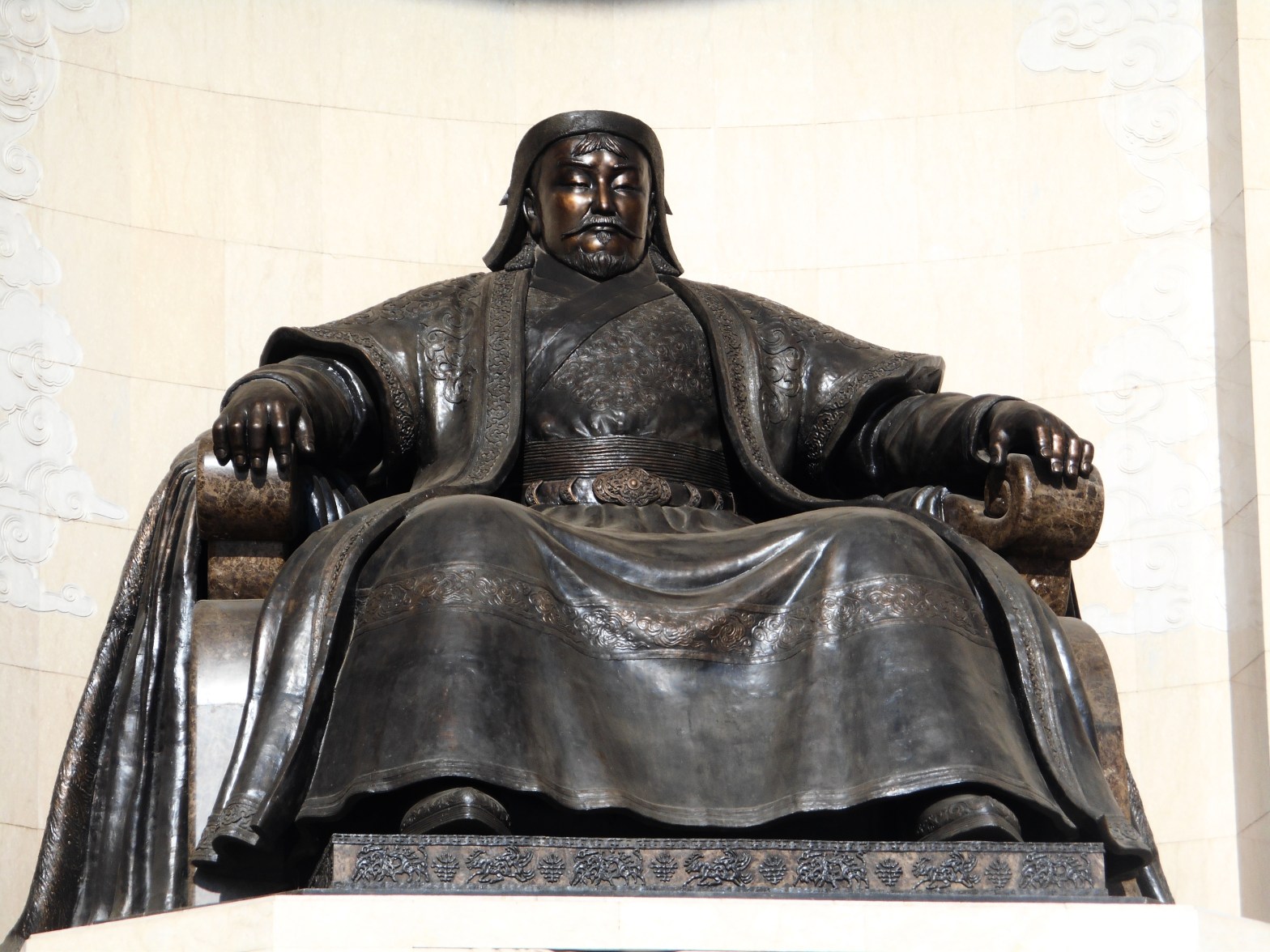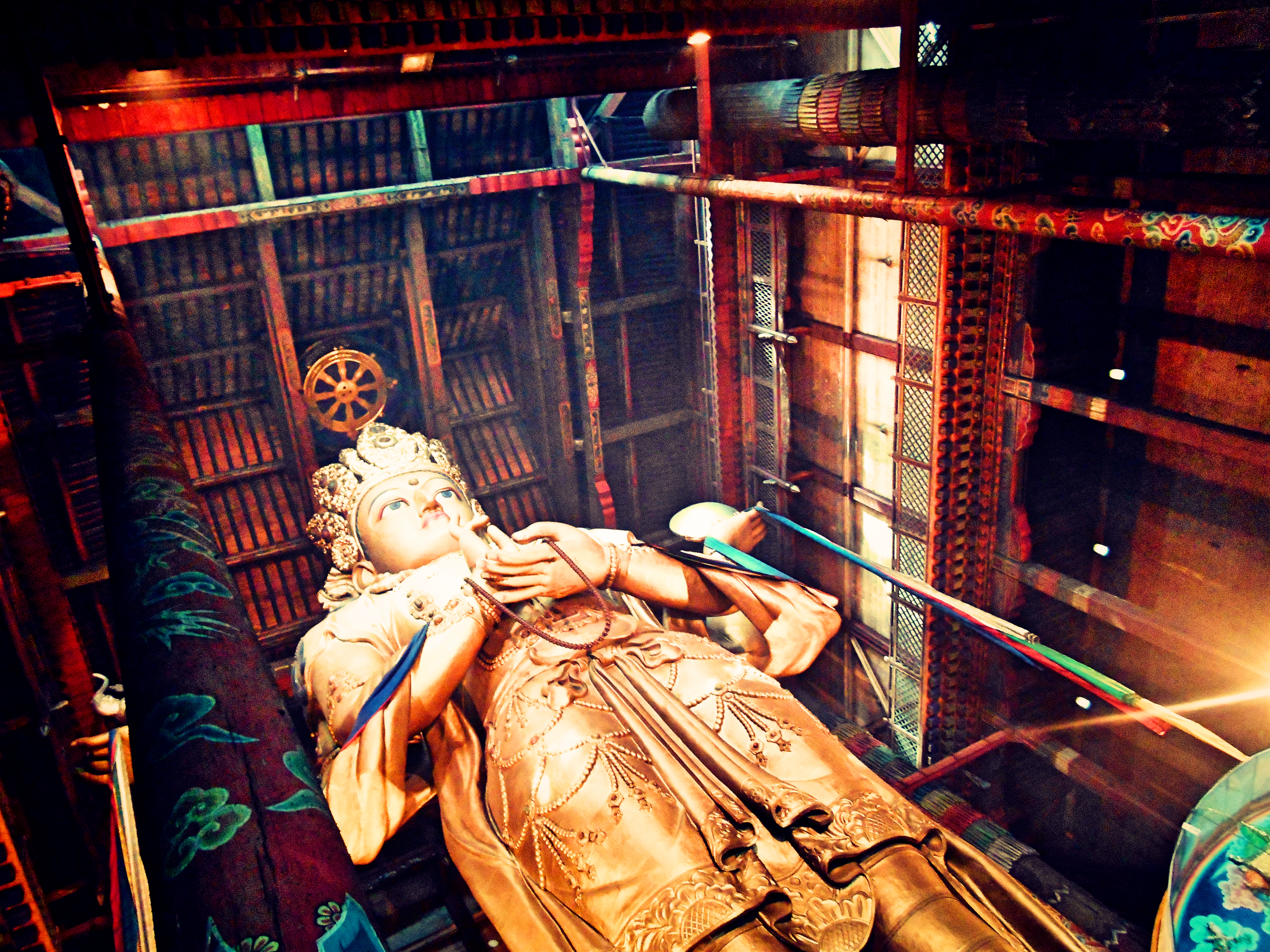
ULAANBAATAR | MONGOLIA
MONGOLIA IS THE LEAST DENSELY POPULATED COUNTRY ON EARTH. IT’S STILL DOMINATED BY A VAST, BARREN BEAUTY ALL OF IT’S OWN. IN FACT ONLY RECENTLY HAVE ROADS BEGUN TO SPREAD OUT FROM IT’S CAPITAL ULAANBAATAR IN AN ATTEMPT TO TAME THE SAVAGE WILDNESS OF THE GOBI DESERT AND MONGOLIAN STEPPES.
Like a rollercoaster, the Trans Siberian seems to enjoy depositing you on the road side confused and disorientated. I stepped out of the train station into the kind of pitch black that only a 5am winter’s morning can provide. After an interesting journey getting lost with an equally confused taxi guy, and an hour or so wandering around a deserted Ulaanbaatar in -25 temperatures I’d eventually made it to a warm bed. Everything will look better in the morning, I told myself. Or later on in the day, as the case may be, seeing as I had wasted most of the morning already narrowly avoiding freezing to death.
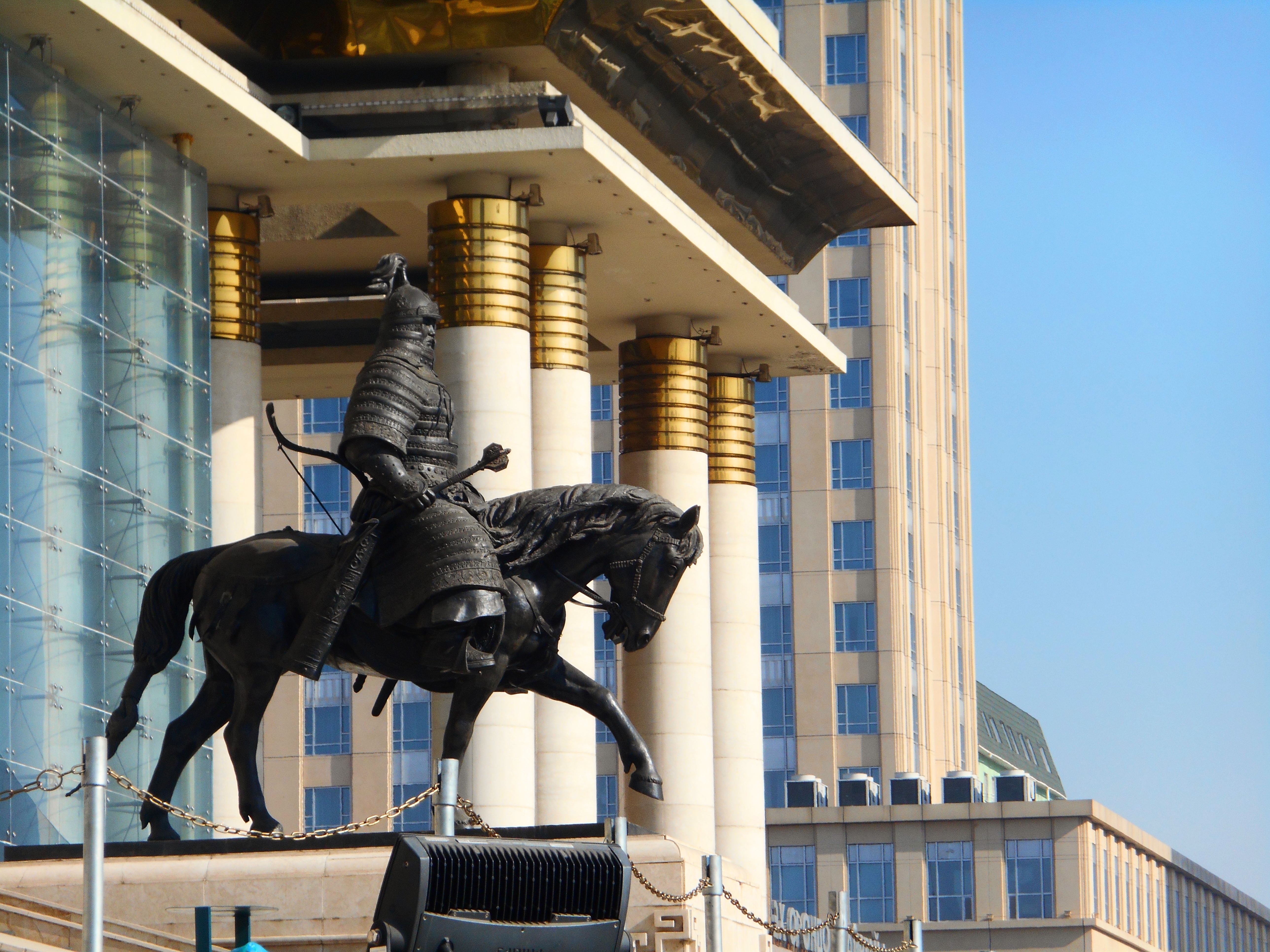
And sure enough it was. I woke to the news my Irish friends Kate and Aoife would be delayed. We Irish haven’t really figured out the whole “punctual” thing yet, or how to navigate public transport. I set out to explore some of the city by myself. It was crisp and sunny, but you can’t let that fool you here. Ulaanbaatar is the worlds coldest capital city. Daytime temperatures here barely scraped above -10 / -15. But that’s toasty compared to what it drops to at night. After refueling with a surprisingly easy to find fried breakfast and a delicious hot cup of tea I made it to Sukhbaatar Square. Today it is known as Chinngis Square for reasons that will be readily apparent. Chinngis Khan is how the Mongolian people refer to the infamous Genghis Khan, the warlord who united the Mongolian tribes and formed an empire which stretched from the far East to eastern europe.
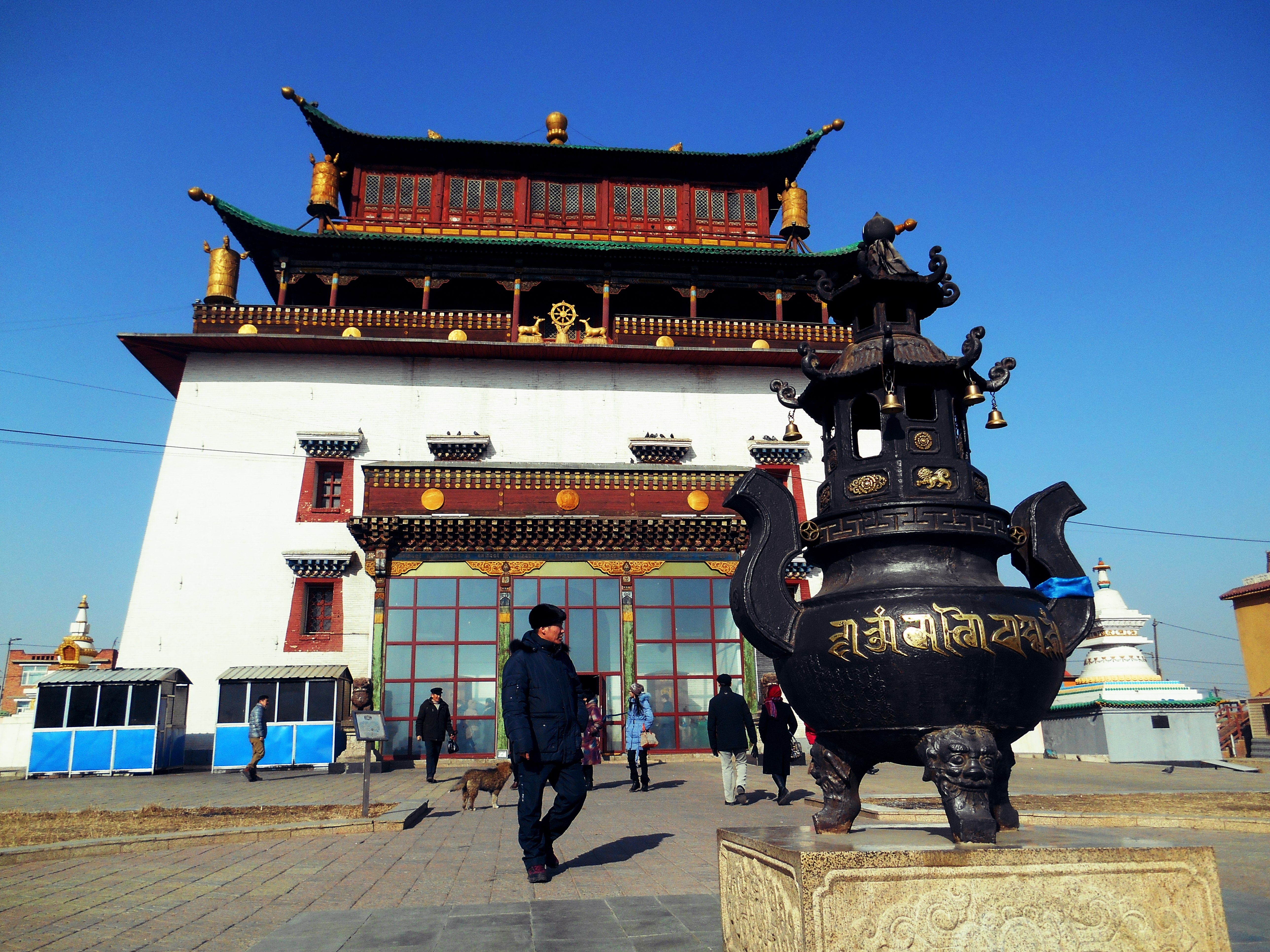
Here in Ulaanbaatar’s central square stands a fitting monument to the man widely considered a national hero. Sure he raped and pillaged, but that was merely the style at the time. He implemented a great number of social changes which were revolutionary at the time, among them the freedom of religion, and an emphasis on technological advancement and exploration. The Mongol empire spread like wildfire due to their mastery of cavalry warfare. The love and respect of horses in this country is something which is obvious from the outset. In the west an extreme love for horses usually manifests as a creepy My Little Pony fetish among middle aged men.

After marveling in the shadow of a man I was probably distantly related to due to the abundance of the aforementioned rape, I eventually found myself passing through more blocky, Soviet-esque neighbourhoods until I arrived at the Gandantegchinlen Monastery. Or Gandan to it’s friends. Tibetan Buddhism is the largest religion in Mongolia and this Tibetan monastery was the only one allowed to remain open in Mongolia under Marxist rule. Today it houses the worlds largest indoor statue at 26 meters tall. Inside devotees light candles and incense as they complete a circuit around the idol to Avalokitesvara. Despite being crowded your gaze is drawn upwards with the dancing smoke through the beams of light filtering through the wooden windows and cracks, and among the colourful Buddhist drapes and hangings. It’s unusually peaceful. For some reason my mind wandered to the Eddie Murphy film The Golden Child, and the ancient, smokey, Tibetan monastery there. It’s not often I think about Eddie Murphy – usually only when someone has the Beverly Hills Cop ringtone.
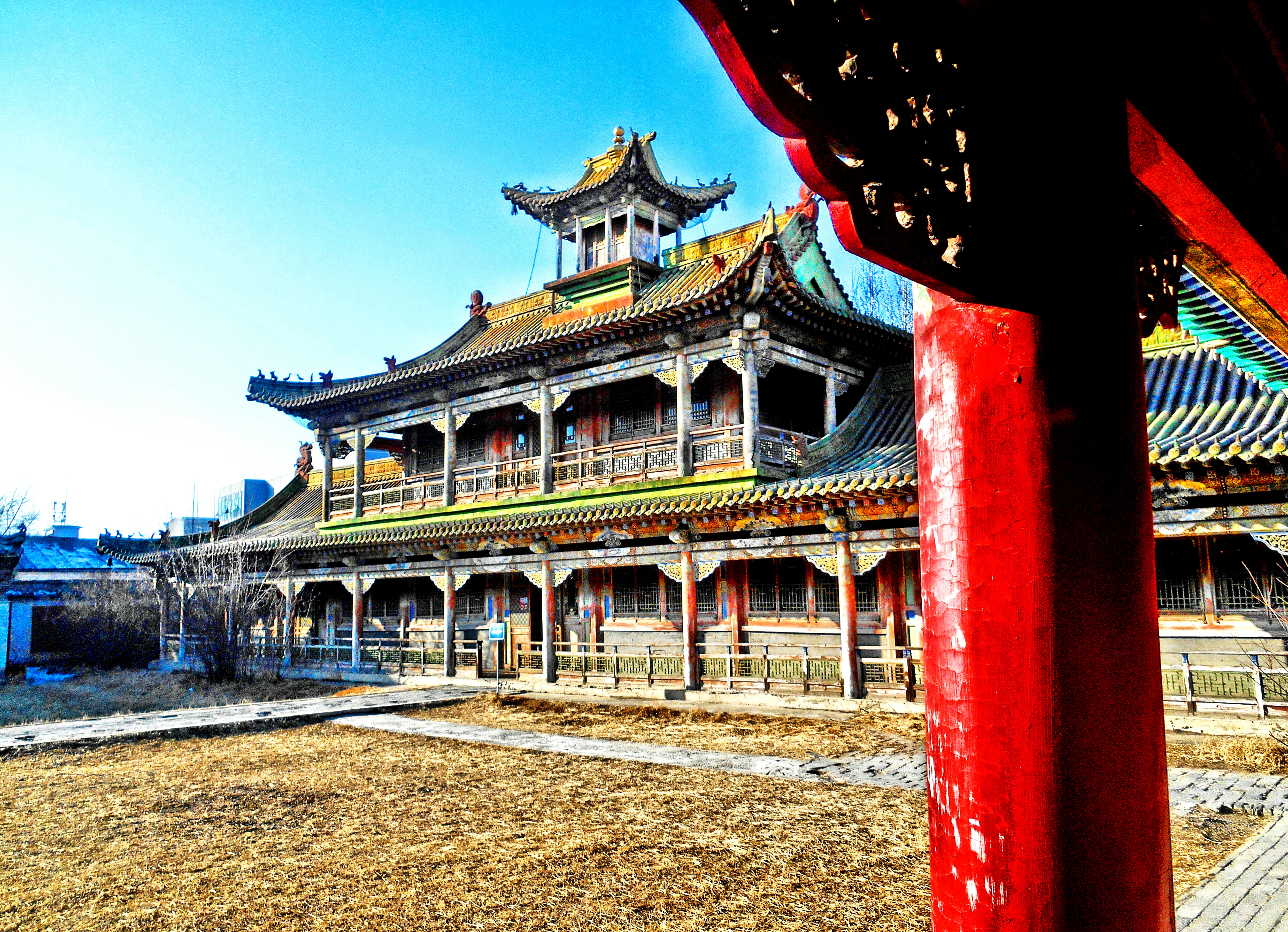
There’s quite a lot to see here in Mongolia’s capital. Today it’s a city rapidly modernising itself. In between Chinese glass and steel are old monasteries and palaces, instantly snapping your mind back to an ancient time. Another place which is definitely stuck in a time warp is the Bogd Khan Palace, winter residence of the last emperor of Mongolia. It’s old wooden buildings appear almost neglected and in danger of being overgrown with weeds and bushes. The once vibrant colours and paint, are now faded and chipping. The ancient decking creaks and groans with every footstep. It’s old alright, and it definitely looks it. I loved it. It’s not a crowded, Disney-fied attraction. It’s quiet and dignified and genuinely reminiscent of a time long past. Still, it could do with some gardening though.
Eventually my travel buddies arrived after missing their bus or something. The good news is that we could now hop into our trusty 4×4 and explore the countryside. I’d arranged a short tour with dapper lady-magnet Adnan. We’d be heading west towards the ancient capital of the Khans known as Karkhorin. Along the way we’d be stopping at a northern strip of the Gobi desert known called Bayan Gobi, before stopping in the famous Kushtai National Park hoping the catch a glimpse of Mongolias native wild horses. All in all a packed schedule. And who better to guide us than our slightly bemused driver we christened Mr Shady, because we had no idea how to pronounce his name properly.

Just outside the city lies an enormous complex to honour the man himself. Flanked by stone sentinels on horseback, the forty meter high Genghis Khan Statue towers over the Tuul river. Here, according to legend he found a golden whip which he knew meant he was destined to be a great leader and unifier of tribes. Or alternatively create a bling, central Asian Anne Summers chain. Inside the statue is a display showing what it might be like inside a Khan’s yurt, along with the world’s largest leather boot. I thought it was a bit skimpy to only display one boot, but then again I guess it’s the same when you go into a shop. I couldn’t find a sales assistant to find me the matching pair to try it on.
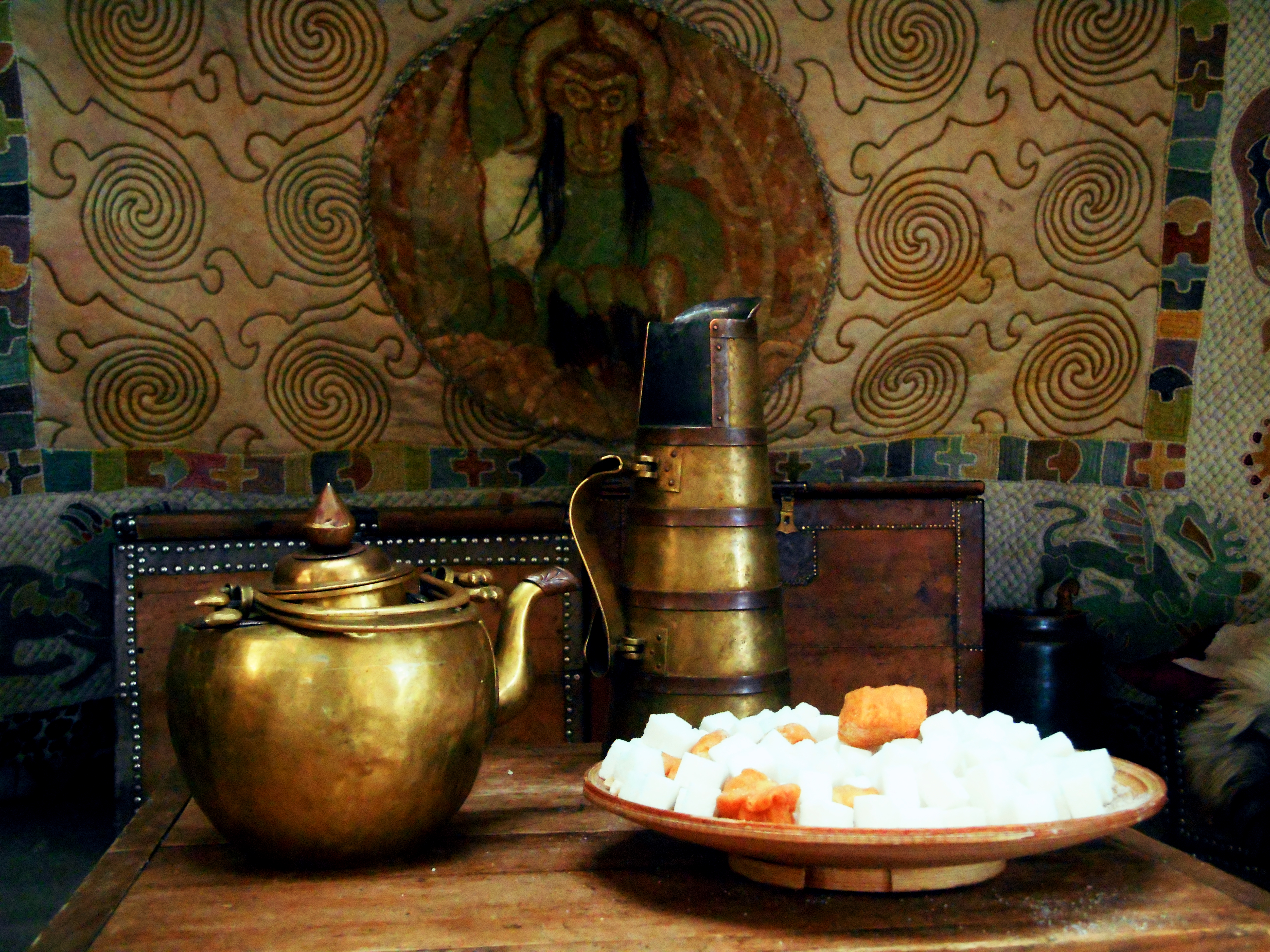
When you climb the stairs you emerge through Genghis’s crotch onto a balcony providing an amazing view over the Mongolian expanse. It seemed fitting to reemerge from Genghis’s human factory of a loin, seeing as how statistically speaking we probably originated from here in the first place.

Outside we had great fun with the birds of prey exhibit. Here they had a golden eagle and a huge-ass vulture. Part of the fun was in holding the animals, but mostly the fun was had from watching Kate. Kate is afraid of birds, and really I don’t see what there is to be afraid of. These cuddly animals with their razor sharp talons and bone breaking beaks wouldn’t hurt a fly. The mongols used trained eagles for hunting in much the same way other cultures have used dogs, only these dogs could fly and carry off small children. Maybe Kate had a point actually.
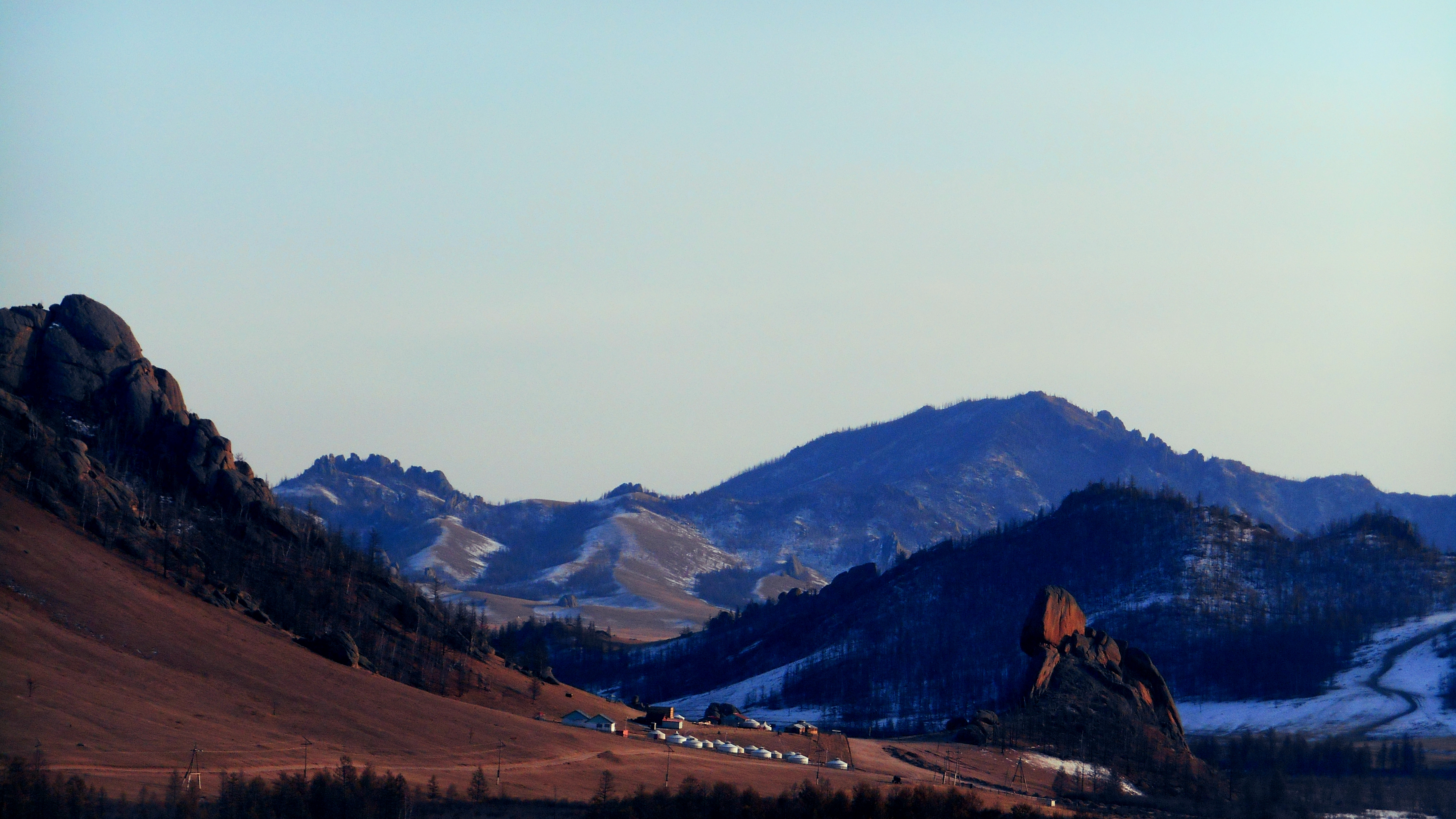
We made a hasty escape from the man-eating terror birds and hit the long road north towards Terelj National Park. It’s a rugged, hilly patch of wilderness dotted with bizarre rock formations that look like turtles and dinosaurs. On closer inspection those dinosaur-like formations turned out to be genuine dinosaurs. Or sculptures of them at least. No one was around, and the place was empty except for a shack and a dilapidated piece of fence. Oh and a handful of life sized dinosaurs like the Flinstones doing the mannequin challenge.
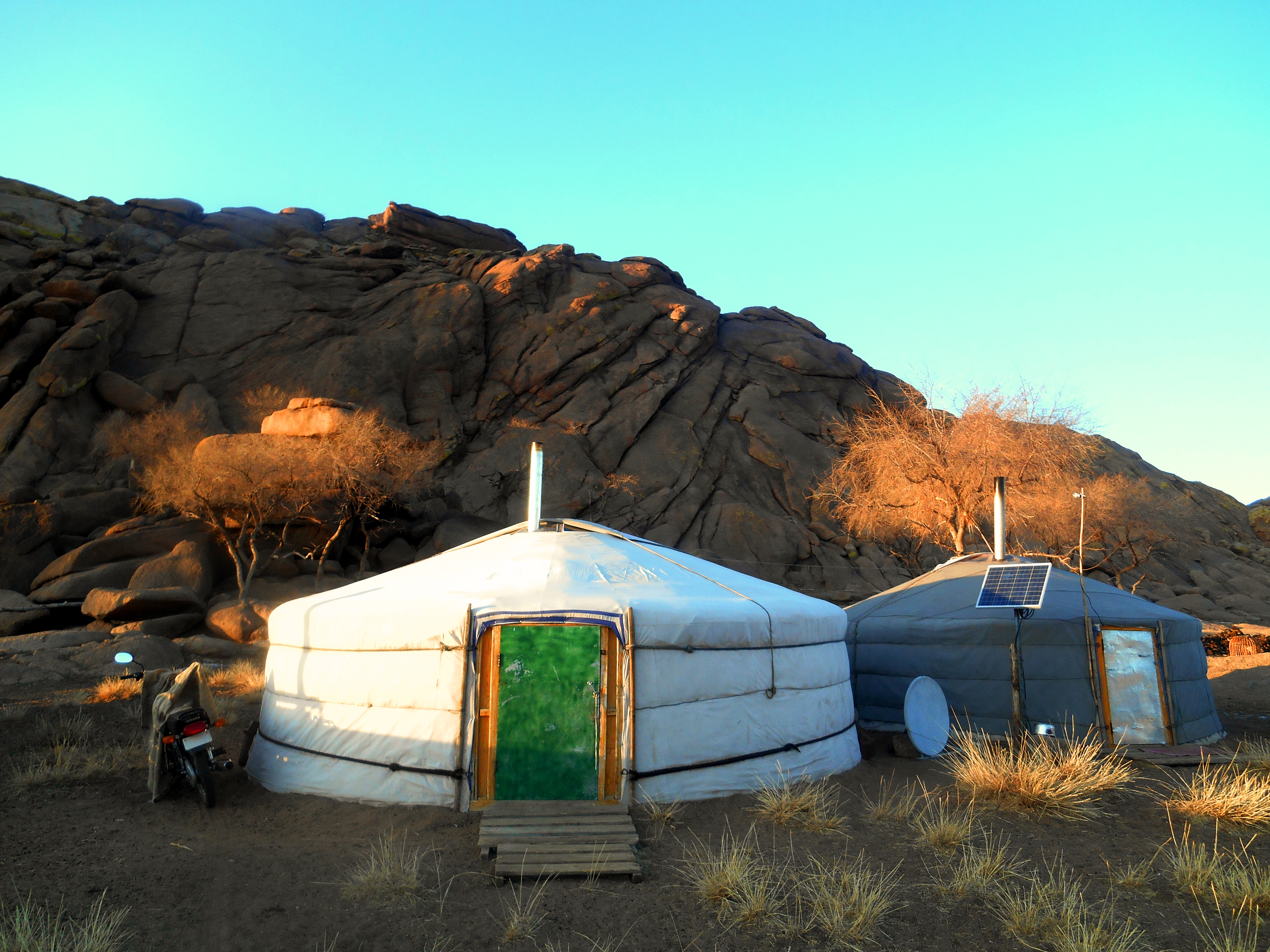
That night we stayed in the park with a local family in their yurt. A yurt is a traditional, circular Mongolian dwelling. It looks like the creme filling in a Jacobs Kimberley biscuit turned into a house. In the centre sits a wood (or dung) fired stove. This will be your only friend in the sub zero Mongolian nights. We had debated with coming up with a plan for surviving the night. Basically it revolved around sleeping in shifts to keep the fire – and ourselves – alive. That and sleeping underneath eight feet of blankets. In the end our saviour Mr Shady made regular visits to our yurt to stock up the stove and tuck us in. Yes, he literally tucked Aoife in. I think its the cutest thing I’ve ever seen. Or the creepiest. I haven’t decided which.

You read the dung bit right too. What do you do when you’ve run out of wood but have an abundance of horse shit? Answers on a postcard. I rode a horse earlier that day. It was my first time riding one, so the less said about it the better.
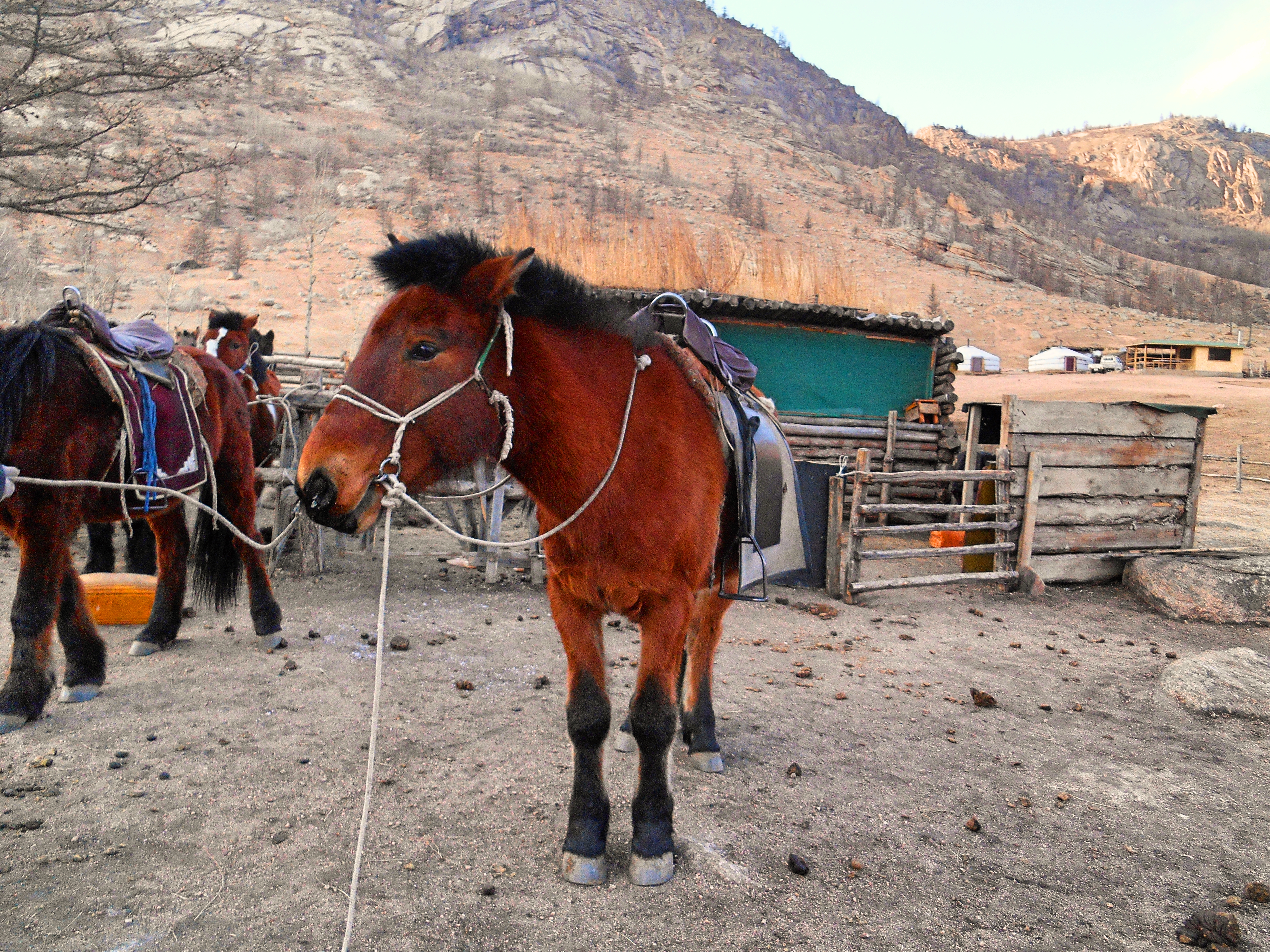
After mastering the ancient art of horse riding, the next night was spent with a dude that owned around five hundred sheep. The things were everywhere. It’s hard to describe the sense of isolation out here. It’s easy to understand the mongolian affinity with animals when there are no other humans for two time zones. And the families are hilariously friendly.Mongolian children are the cutest in the world. This is a fact. If anyone disagrees I’ll fight them. Not in front of the living-doll-like children though, I don’t want to ruin their innocence, bless their bronze porcelain faces.
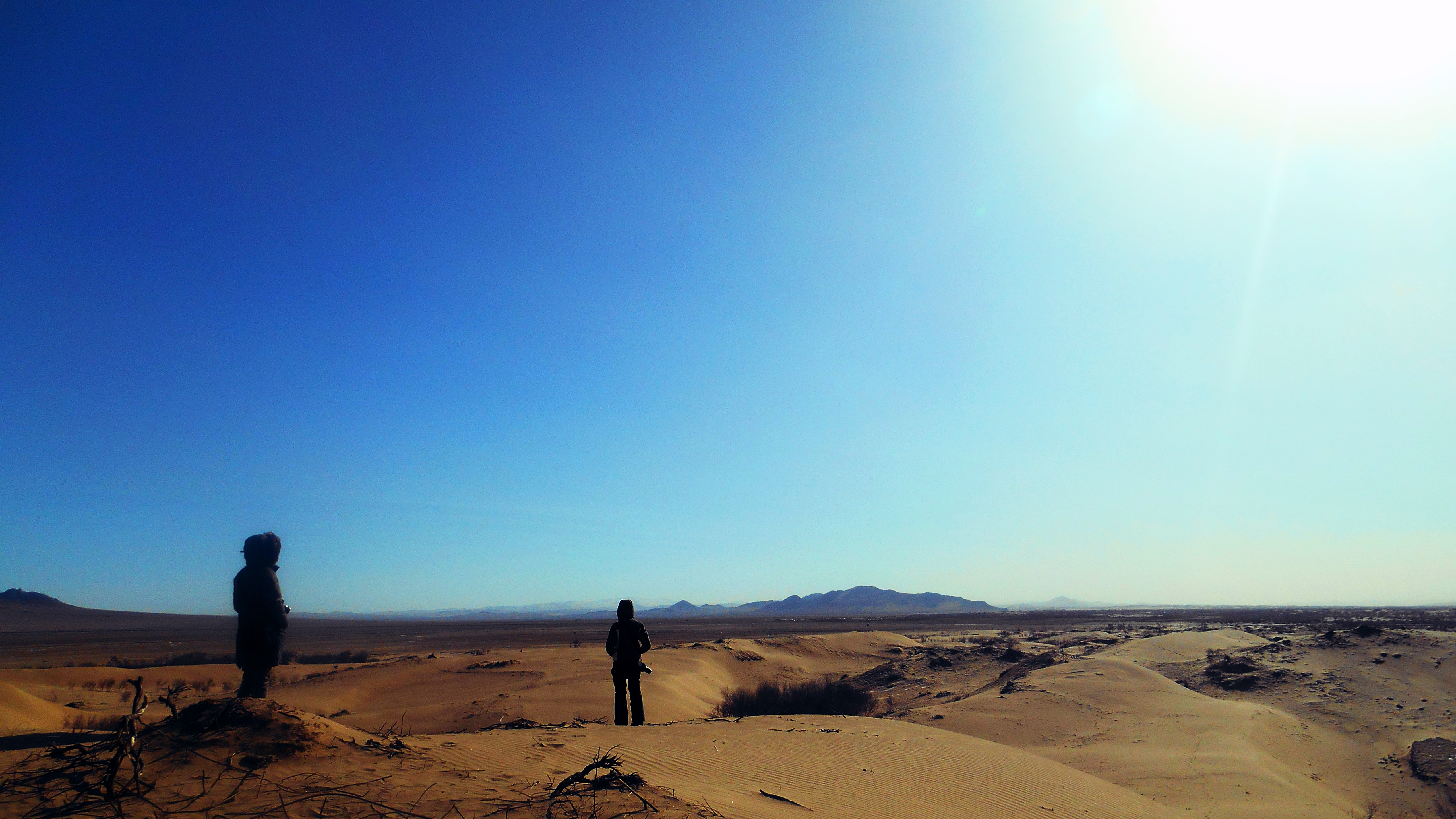
After trying some possibly illegal booze and delicious local food, it was time to crawl underneath two tonnes of blankets and pray we survived the night. It was -31. The last time I seen numbers that low were my college mid terms..
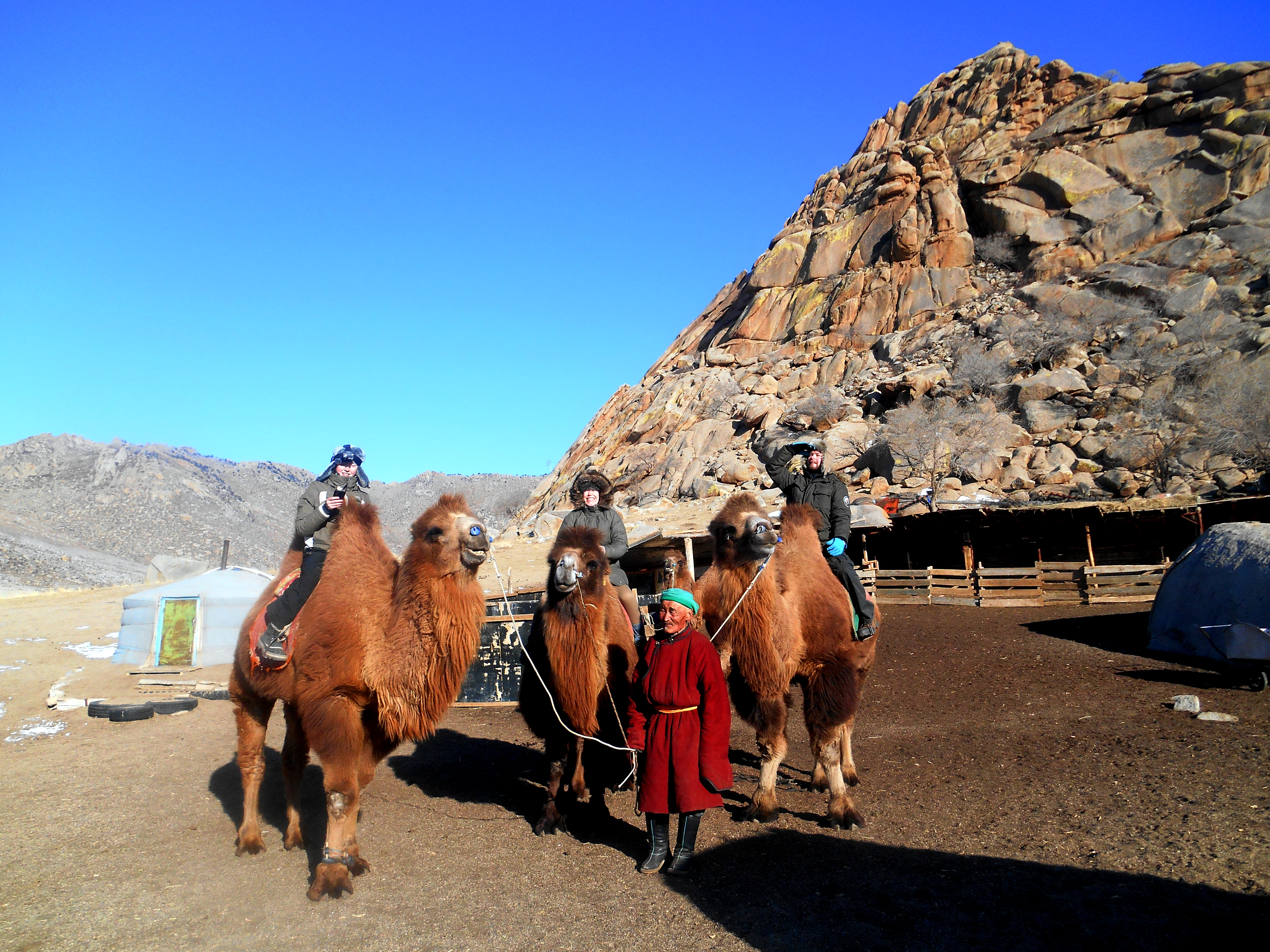
We thought it would be a bit of a waste to visit the Gobi and not hitch a ride on a Bactrian camel. These are the lesser known two-humped camels native to central Asia. Unlike the better known arabian camels, they keep themselves to themselves unlike their famously bad tempered single humped cousins. Greeted by a toothless little nomad in a green hat that looked like a mongolian fairy, I had a go at rounding up our three camels and, due to my natural connection with the animal world, it was a great success.
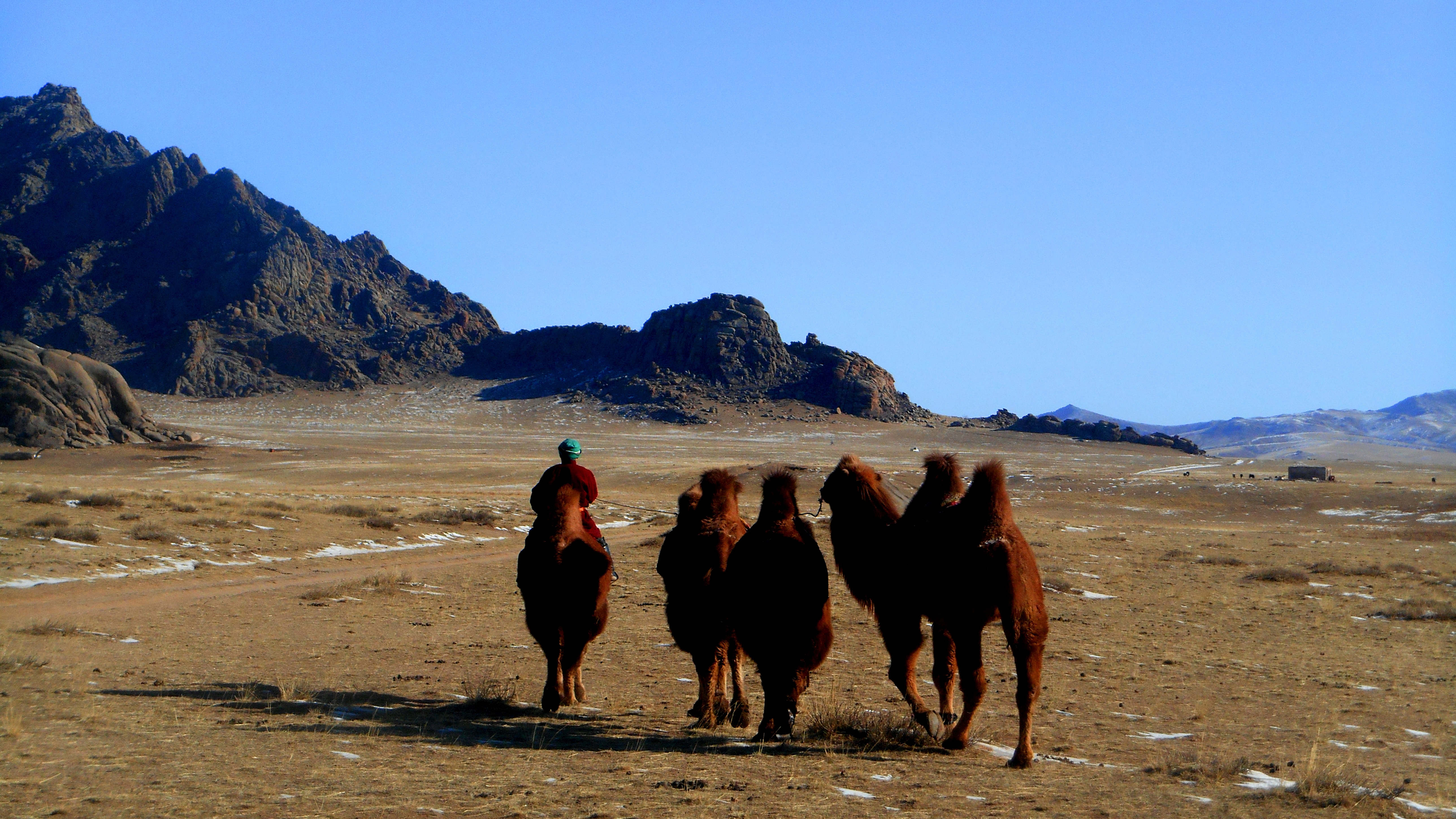
In no time at all we were on our way across the barren steppes in our limousines of the came world. Seriously these things are awesome. I’ve never found camels too hard to ride, but these guys were like upgrading from economy to first class. Their two furry humps were ergonomically designed to accommodate human riders. It’s almost as if mother nature was apologising for her disastrous initial prototype.

As we headed further west we passed through the northern strip of the Bayan Gobi, a sea of sand surrounded by an endless horizon. I quite like deserts. It can be a hell of an effort to climb the high dunes, but the vistas are usually worth it. I like the peace and quite too, and the patterns the wind makes blowing across the sand. I wouldn’t live there though.
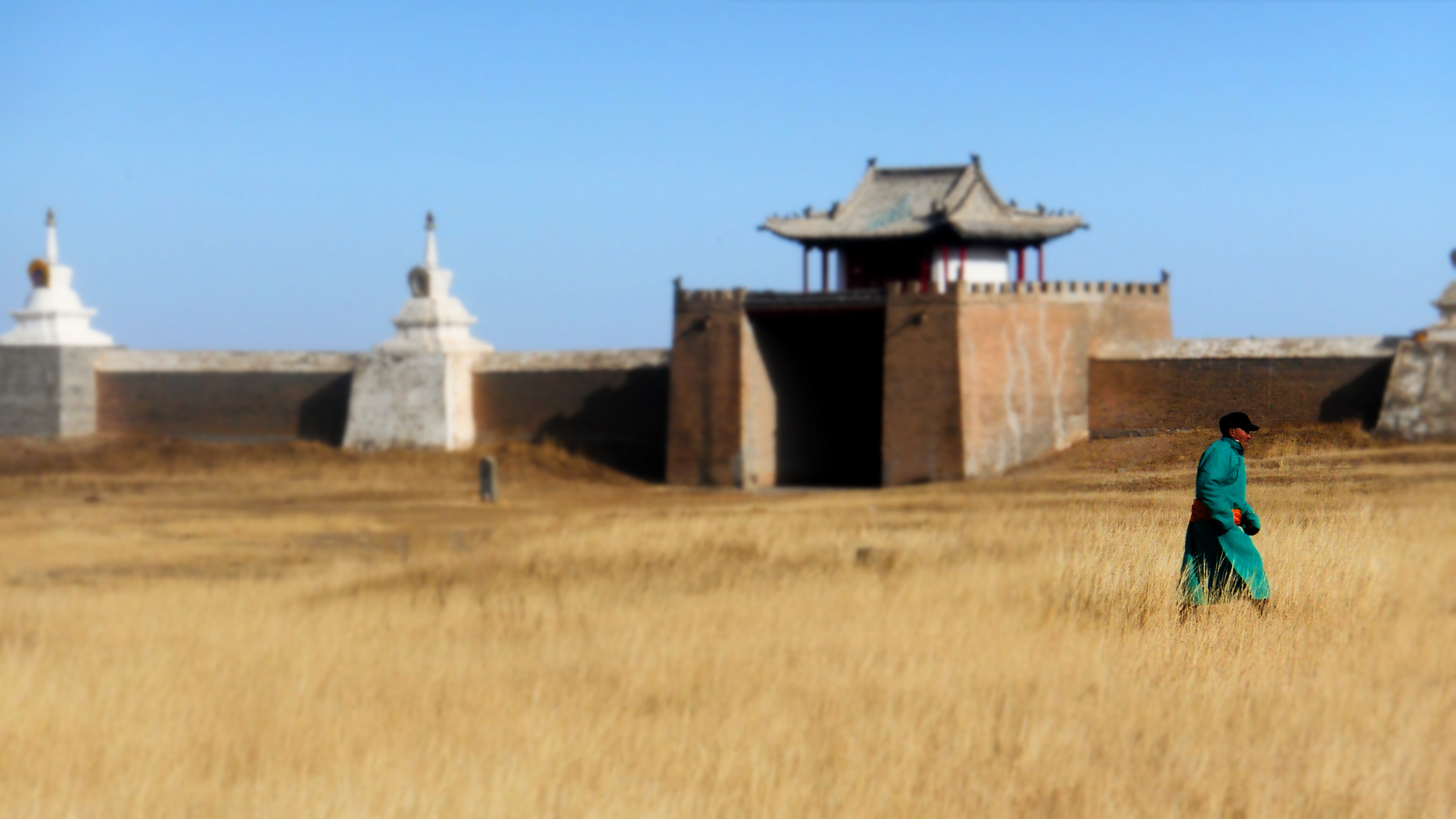
Soon we arrived at the most south western stop on our grand tour of Mongolia. In the 13th century non-consensual sex promoter Genghis Khan laid out plans here in Karakorum for the capital of the Mongol empire. Soon his successor Ogedei Khan had constructed an enormous town of palaces and temples, before Kublai Khan moved the capital further inwards towards China, eventually settling in Beijing.
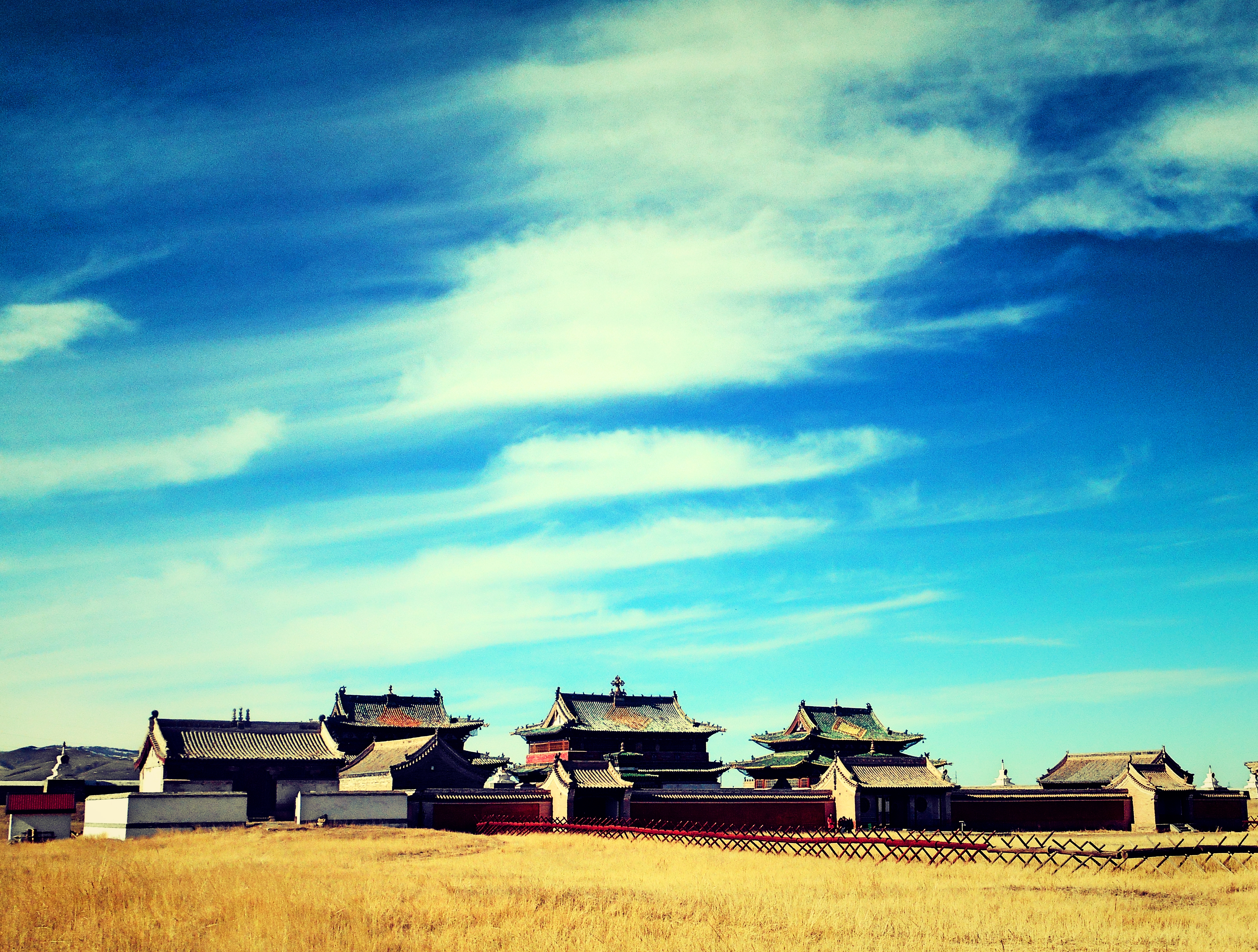
What remains here today is the impressive temple complex of Erdene Zuu surrounded by a intimidating white wall of stupas. The temples were mostly destroyed during the communist regime, but were saved from complete destruction by Joseph Stalin in an unusual display of restraint. Today it is once again a place of buddhist worship. Of course no monastery is complete without a giant rock penis. You can find one on the hill overlooking the site called the Kharkhorin Rock. It was both a symbol of the monks celibacy and a symbol of human fertility. The trick being not to mix the two together.
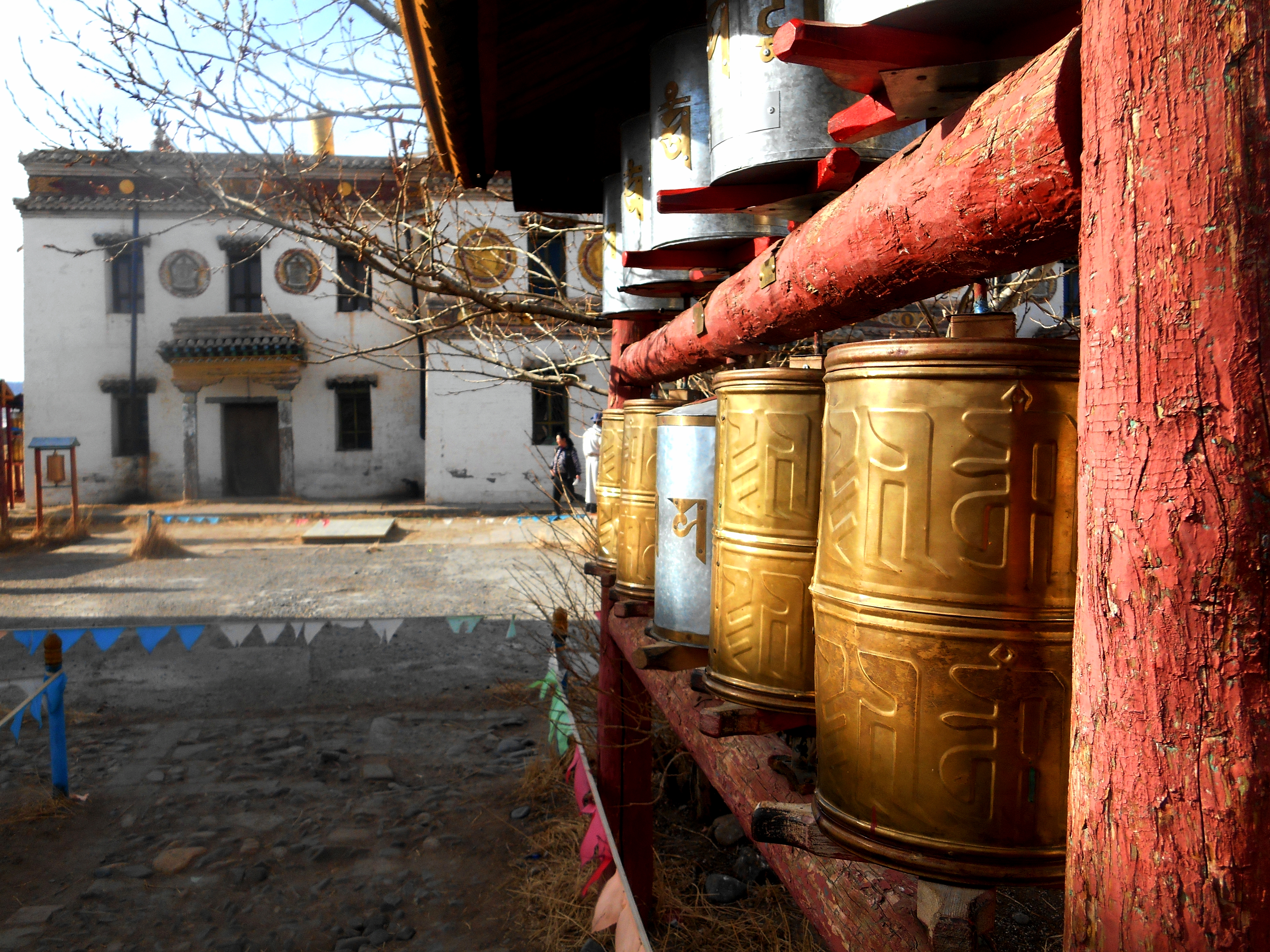
Not to be confused with a giant phallus, there is also a well known carving of a turtle, one of the few parts of the original ancient site left.These were symbolically placed at the entrance gates to the city. Nothing says progress and forward thinking like a turtle. Eventually humanity would upgrade even further to ninja turtles, reaching the zenith of our civilisation.

On the way back towards Ulaanbaatar we took a detour through Kustai National Park. Here, on the semi-frozen steppes, live the worlds last remaining wild population of Przewalski’s horses, known locally as Takhi. The takhi are the world’s only wild horse. Some, such as the American mustang, are feral versions of the domesticated horse, while others such as the zebra aren’t actually horses at all, and are more closely related to donkeys. After doing laps in Mr Shadys adventure mobile (at the weekends probably Adnan’s pulling mobile) we eventually found a part of the herd moving their way through a valley below us. It was a great moment, for Aoife especially, who had a great love for both wildlife and Adnan. Takhi look like stockier, cuter versions of the modern horse, and a lot smaller too. I don’t think these particular wild horses would do a very good job at dragging anyone away. Unless it was Peter Dinklage.

And with that it was the long road back to the capital. After a magnificent hot shower and a fancy meal it was time for Team Mongolia to disband. Kate and Aoife were continuing their Trans Siberian adventure destined for Beijing, while I was flying south towards Hong Kong.
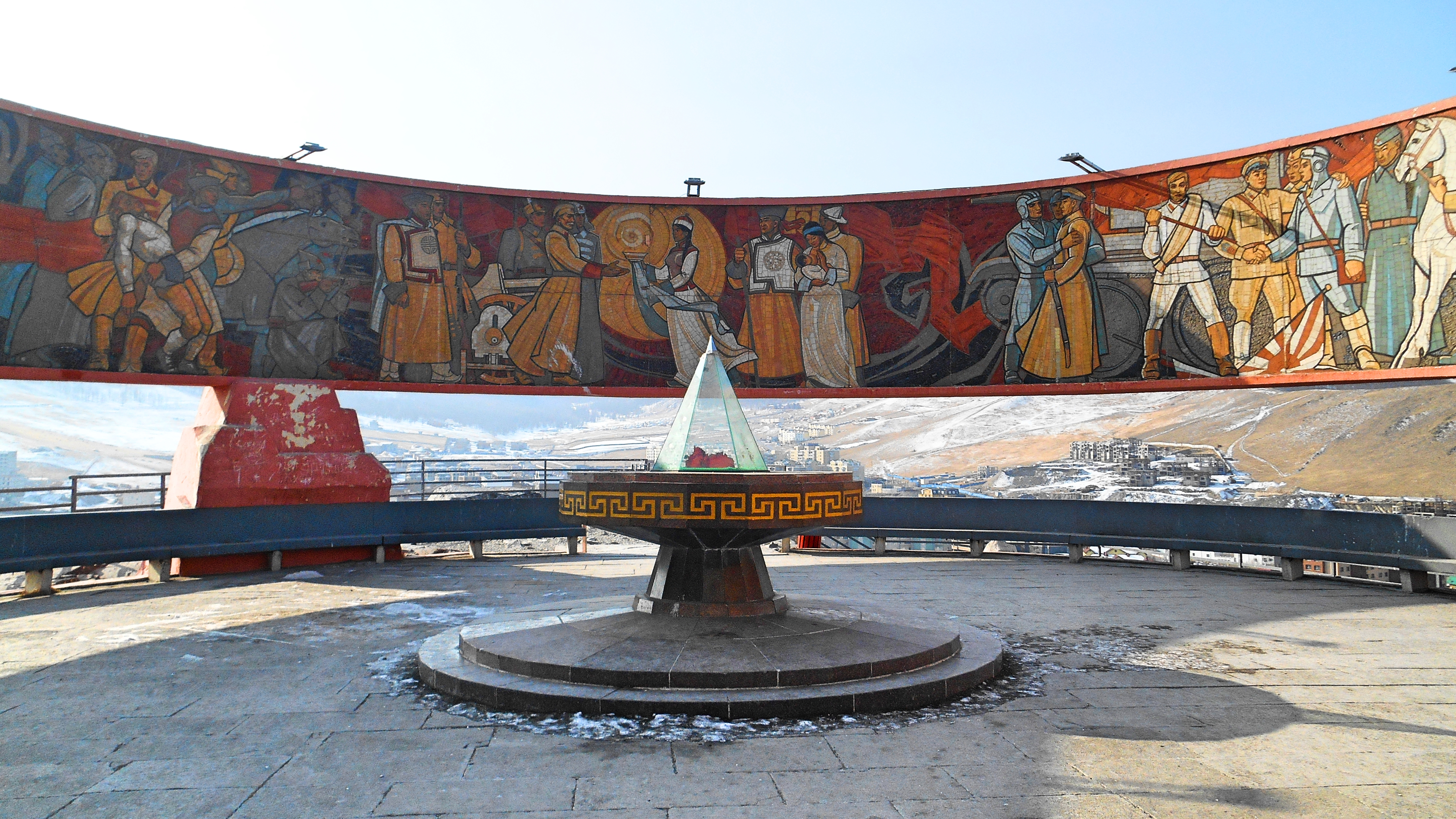
Mongolia was an incredible destination, just as wild and remote today as it has been for millennia. From handling huge birds of prey, horse and camel riding, to narrowly avoiding freezing to death by burning shit in a traditional Gobi yurt, it’s a huge notch on the bedpost for any adventure traveler. And if anywhere in the world could tell you about notches on bedposts it would be the land of Genghis Khan.
Next time: Hong Kong is an amazing mixture of the old and the new, and I see a really cool boat.

